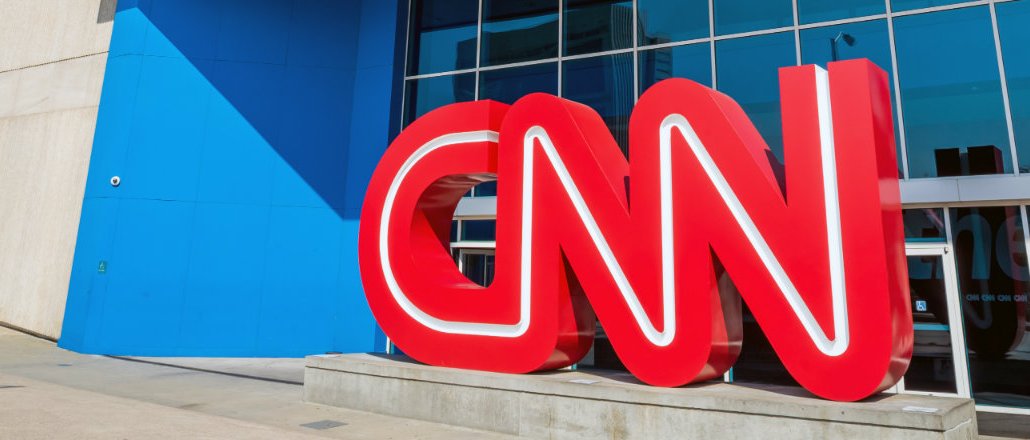Save 50% on a 3-month Digiday+ membership. Ends Dec 5.
Behind CNN’s expanding footprint: ‘Content and distribution aren’t separate’

CNN isn’t a laggard on the social news front. It aggressively posts its journalism to social media platforms, firmly believing it needs to meet readers where they are. It regularly ranks high among news outlets in terms of engagement on Facebook. And with its huge global footprint, it’s sought after by the platforms to pilot new initiatives and features like Snapchat with Discover and Apple with Apple News.
But the network believes that in a platform era, there’s more it can do to get its journalism out there. That task now falls to Mitra Kalita, who just joined CNN from the Los Angeles Times, where she was managing editor, and previously held editorial roles at Quartz and The Wall Street Journal before that.
As CNN’s vp of digital programming, Kalita, will head a team of up to 18 that will program for mobile and social as well as the homepage and alerts. It’s part of a bigger shift by CNN to digital from TV, for which it’s spending $20 million and hiring 200 people.
“We already offer immense value,” she said. “What we want to do — very broadly — is to figure out if there’s a new event that happens and people turn to CNN, how do we keep them there. It also means finding new readers in all the places they are. I don’t see content as separate from distribution. If you’re not thinking about where people will read it, it’s not going to be that successful.”
Kalita has 12 people on her team now, with plans to hire as many as six more. The team will work closely with CNN’s social news head Samantha Barry to figure out the best way to get out the news. To that end, Kalita will be looking for people with journalism, tech, product, design and possibly a combination of those skills — people who understand platforms and distribution opportunities, possibly with visual backgrounds. Kalita acknowledges these are the “unicorns of our industry, and everyone wants them,” but she’s seeking people who are willing to break the formula for news when warranted.
“It might mean breaking Pokémon Go into a social video that explains what this thing is all about,” she said, speaking theoretically. “It might be an animation. Are we going to change the way we tell stories? Are we going to take the characters and have them narrate what this means? Do we go meta on some of these stories? Those are stories that aren’t going to only live on CNN.com or the network.”
CNN is already publishing liberally to platforms — the last week of April, it published 2,046 posts to eight platforms, more than eight other big news publishers including Fox News and The Huffington Post, according to Tow Center research. Kalita sees a big opportunity with Apple News, based on the Los Angeles Times’ experience with it for political and explanatory articles, even though publishers have been disappointed with the traffic they’ve seen from the news aggregation app.
Kalita also will be programming for Amazon Echo, the voice-controlled speaker, and she’ll also be looking at whether to share news or feature content there, or both. CNN has started to think mobile-first, and her team will also seek to build on that by evangelizing the importance of mobile throughout the newsroom.
While it’s become popular for some publishers to assign people to platforms, given the uniqueness of each, Kalita recognizes the need to stay flexible, given the fickleness of platforms. “Let’s not get too beholden to a platform before we understand what its place might be,” she said. “The rules also keep changing.”
Today, with news organizations needing audience scale to be competitive, it’s imperative that they get more out of the content they create, whether it’s resurfacing old articles, repurposing them in new forms or making them more shareable.
To some, content that’s highly shareable suggests clickbait, a practice The Washington Post has found itself accused of as it has aggressively grown its audience. But Kalita, who started out as a beat reporter, said she sees her role as finding an audience for important, hard news.
“I spent so much of my career trying to get people to care about news — and the fun part of digital has been the ability to marry caring about the world and finding readers,” she said. “So I really do think it’s possible to say, ‘Here’s the price of milk right now and here’s something you really need to care about,’ and lo and behold you get readers to care about inflation in Venezuela.”
More in Media

Digiday+ Research Subscription Index 2025: Subscription strategies from Bloomberg, The New York Times, Vox and others
Digiday’s third annual Subscription Index examines and measures publishers’ subscription strategies to identify common approaches and key tactics among Bloomberg, The New York Times, Vox and others.

From lawsuits to lobbying: How publishers are fighting AI
We may be closing out 2025, but publishers aren’t retreating from the battle of AI search — some are escalating it, and they expect the fight to stretch deep into 2026.

Media Briefing: Publishers turn to vertical video to compete with creators and grow ad revenue in 2026
Publishers add vertical video feeds to their sites to boost engagement, attract video ad spend and compete with news creators.





